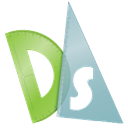Top nanoCAD Alternatives for Your Design Needs
nanoCAD stands out as a powerful and free 2D CAD system, offering native DWG support and extensive customization. Its classic interface, robust tools for 2D and 3D primitives, and an open API make it a go-to for many engineers and designers. However, depending on specific project requirements, budget, or desired advanced functionalities, exploring nanoCAD alternatives can be highly beneficial. Whether you're seeking more advanced 3D capabilities, specialized tools, or simply a different user experience, there's a CAD solution out there for you.
The Best nanoCAD Alternatives
Looking to switch from nanoCAD or exploring other options? Here's a curated list of excellent CAD software that can serve as strong alternatives, catering to various needs from open-source freedom to professional-grade power.

FreeCAD
FreeCAD is an excellent open-source and free parametric 3D CAD modeler, making it a strong nanoCAD alternative, especially for those venturing into 3D mechanical engineering. Available on Mac, Windows, and Linux, it supports 3D modeling, parametric modeling, CAM, FEM, and even DWG, offering a comprehensive suite for design and manufacturing.

LibreCAD
LibreCAD is a fantastic open-source 2D CAD application for Windows, Apple, and Linux, making it a very accessible nanoCAD alternative. It focuses on 2D drawing, offering features like BIM and construction layers, and is even available as a portable app, perfect for basic drafting tasks.

Autodesk AutoCAD
Autodesk AutoCAD is the industry standard for professional 2D and 3D CAD, offering specialized tools for various design and engineering disciplines. While commercial, its comprehensive drawing tools, DWG support, and cross-platform availability (Mac, Windows, Web, Android, iPhone, iPad) make it a top-tier nanoCAD alternative for demanding professional environments.

DraftSight
DraftSight is a powerful and more affordable commercial AutoCAD alternative for Windows, focusing on 2D CAD with support for 3D. It provides a familiar interface for AutoCAD users, making the transition from nanoCAD smooth for those who need robust 2D drawing capabilities without the full AutoCAD price tag.

SOLIDWORKS
SOLIDWORKS is a leading commercial 3D CAD software for design, analysis, and product data management, available on Windows. It excels in 3D modeling, parametric modeling, and simulation, making it an ideal nanoCAD alternative for users heavily focused on complex 3D product development.

BricsCAD
BricsCAD is a versatile commercial all-in-one CAD design solution for Mac, Windows, and Linux, featuring native .dwg support. It goes beyond nanoCAD's scope by offering 2D drafting, 3D modeling, mechanical design, and BIM capabilities, making it a comprehensive solution for diverse design needs.

QCAD
QCAD is a robust 2D CAD application for Mac, Windows, and Linux, available for personal use. It focuses on technical drawings like building plans or mechanical parts, providing a solid, straightforward nanoCAD alternative for 2D drafting and even scripting.

Autodesk Inventor
Autodesk Inventor is a commercial Windows-based software offering a comprehensive suite for 3D mechanical design, product simulation, and tooling creation. As a nanoCAD alternative, it excels in parametric modeling, assembly files, and prototyping, ideal for complex mechanical engineering workflows.

Designspark Mechanical
DesignSpark Mechanical is a free 3D modeling software for Windows, known for its ease of use. It's a great nanoCAD alternative for engineers who need to quickly create and share 3D models without a steep learning curve, bridging the gap between 2D and 3D design.

SALOME
SALOME is an open-source platform for numerical simulation pre- and post-processing, available on Windows and Linux. While not a direct CAD competitor in terms of drafting like nanoCAD, it serves as a valuable tool for engineers needing a robust environment for simulation, making it a complementary alternative for specific analysis needs.
Each of these nanoCAD alternatives brings unique strengths to the table, from comprehensive 3D design to specialized 2D drafting. We encourage you to explore their features, platforms, and pricing models to determine the best fit for your specific design workflow and budget.